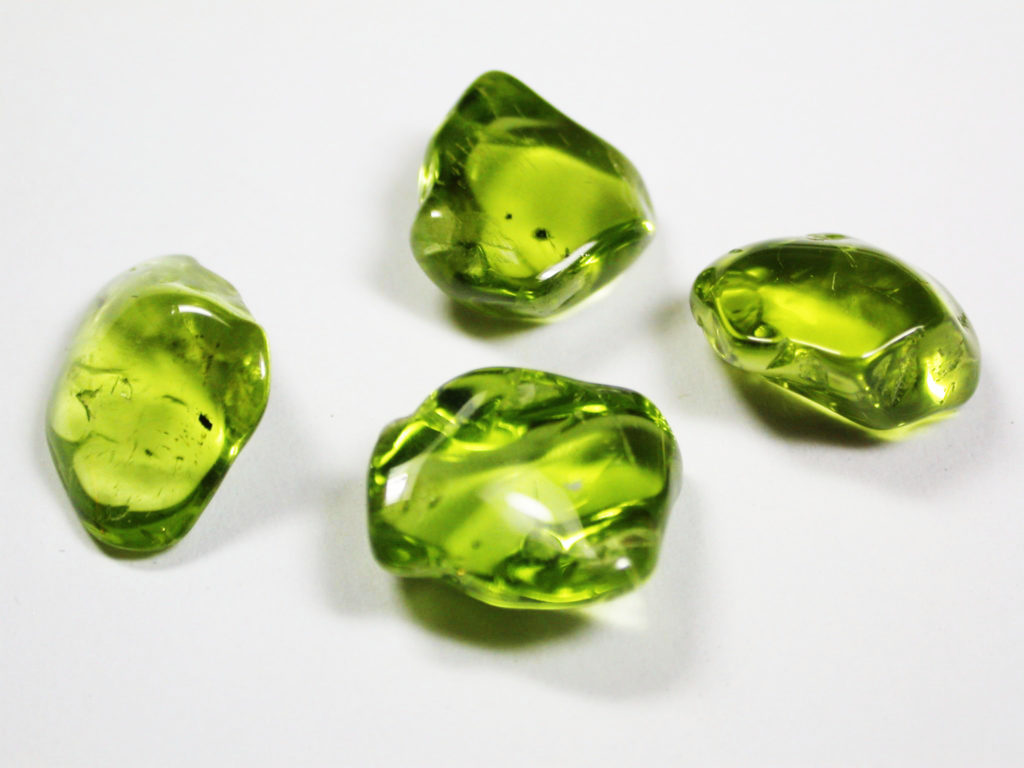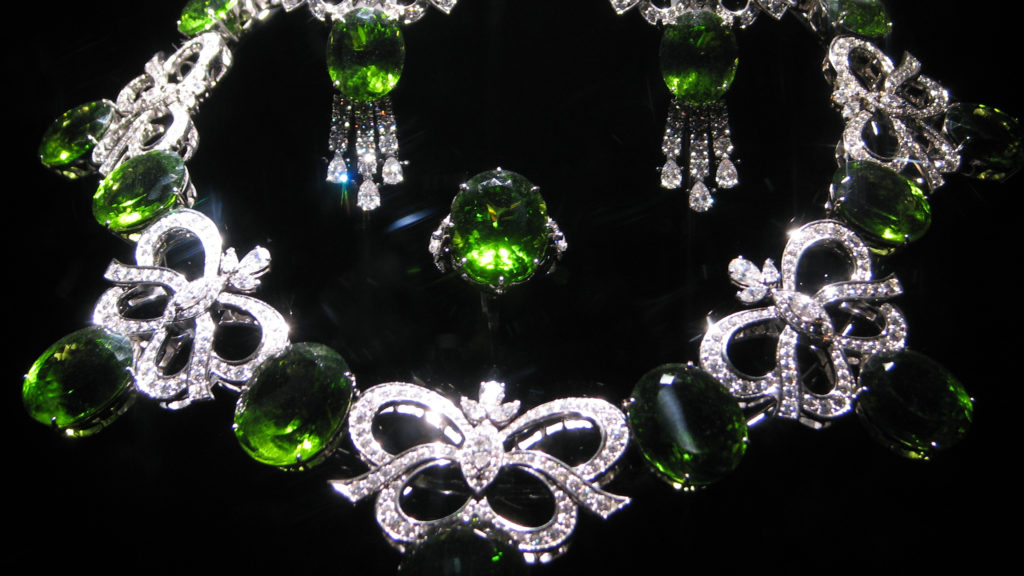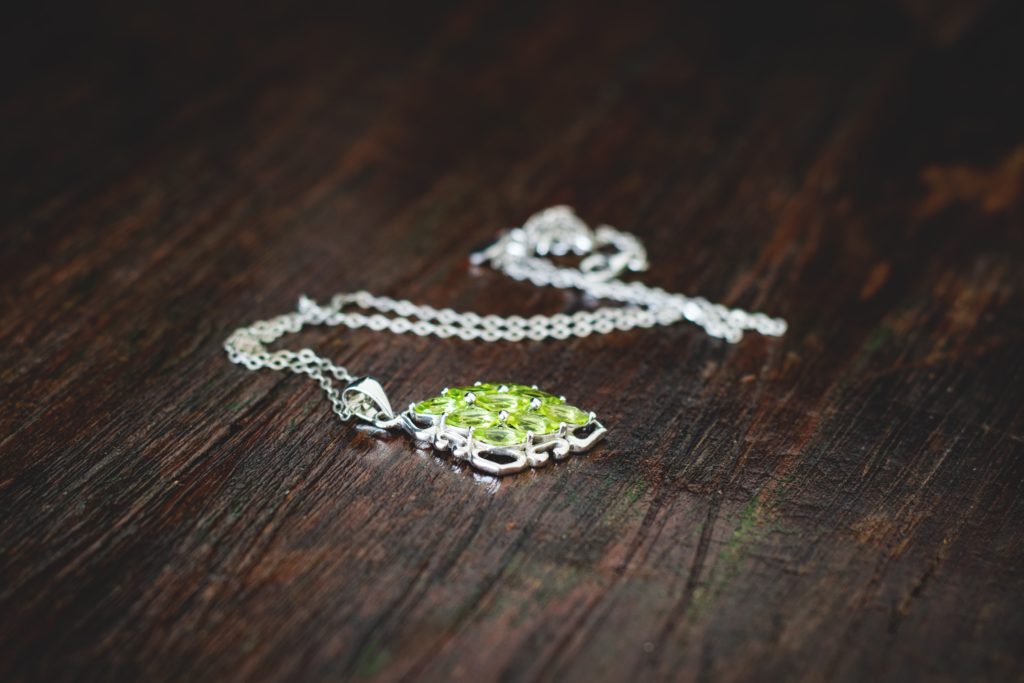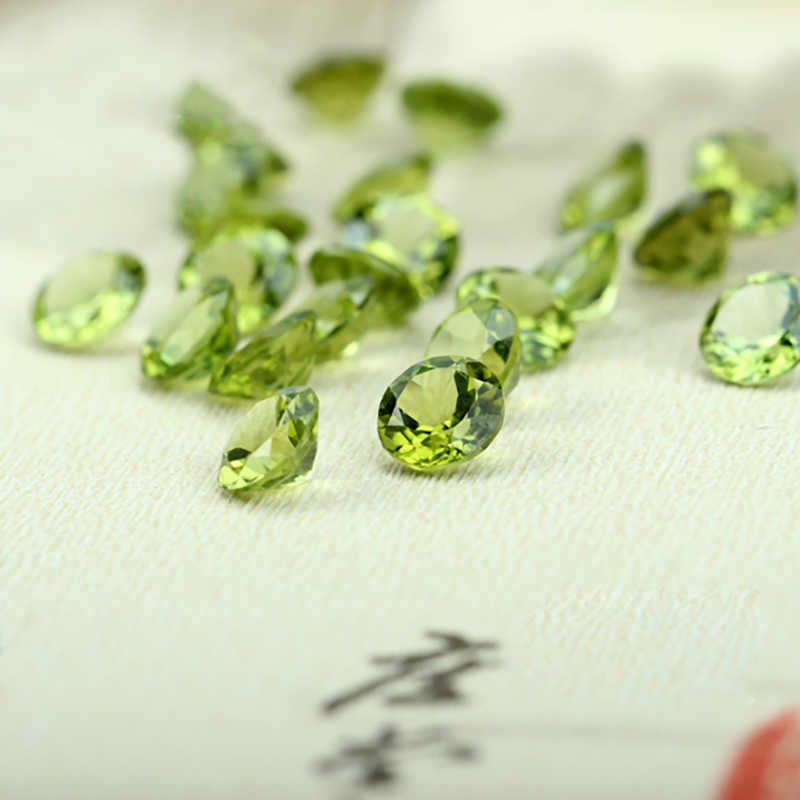Introduction
The peridot is an ancient, light green, cosmic birthstone found in Hawaii’s volcanic lava and in meteorite falls. The Egyptians called the peridot “Gem of the Sun” and believed it had special healing powers.
History

Peridots are likely to be found in two places – deep within the Earth’s mantle at high temperatures and brought to the surface by volcanic activity or riding to Earth on flaming meteorites, called pallasite meteorites. The latter is fairly rare and the peridot deposits are usually too small for jewellery.
Pliny the Elder (23-79 AD), an ancient naturalist, first recorded the existence of peridot on a small island off the coast of Egypt. This island was closely guarded by ancient Egyptians who thought it held priceless treasures. It is widely believed that some of Cleopatra’s famous emeralds were actually peridots. This stone was popular among the Egyptian Pharaohs and till date the peridot is the national gem of Egypt.
Peridots are also closely linked to Hawaiian culture. These stones are thought to be “tears of the volcano goddess Pele”.

Characteristics
The Peridot is pronounced “pear-a-doe” or “pear-a-dot”. It is a unique birthstone because it is one of the few gemstones that occur in only one color, olive/light green. While it really does only come in olive green, the tint and intensity of this color does vary between individual gems. The intensity of color depends on the amount of iron; the more iron it contains, the deeper the green will be and also generally more valuable.
Peridot is a day and night stone, retaining its shining color even under artificial lighting. For this reason, it is also called the “Evening Emerald”.

Symbolism
The light green color of peridot is associated with harmony, good health, restful sleep and peacefulness. Known as the stone of compassion, it calms anger and imparts energy that stimulates both mind and body.
When set in gold, the peridot, is thought to protect its wearer from nightmares. It supposedly frees the mind of envious thoughts that can potentially damage and strain relationships. It is also believed that wearing a peridot helps depression.

Facts & Folklore
The largest peridot ever found has been placed in the Smithsonian Institution in Washington, D.C. and it weighs 319 carats.
The peridot is popular with British royals. The Duchess of Cambridge wears a pair of peridot, blue topaz and diamond earrings. King Edward VII declared the peridot to be his favorite gemstone. Vintage peridot jewellery is frequently found from the Victorian and Edwardian eras.
In the 1700s, a meteorite landed in Siberia. It contained many peridot crystals, large enough to be used for jewellery.

